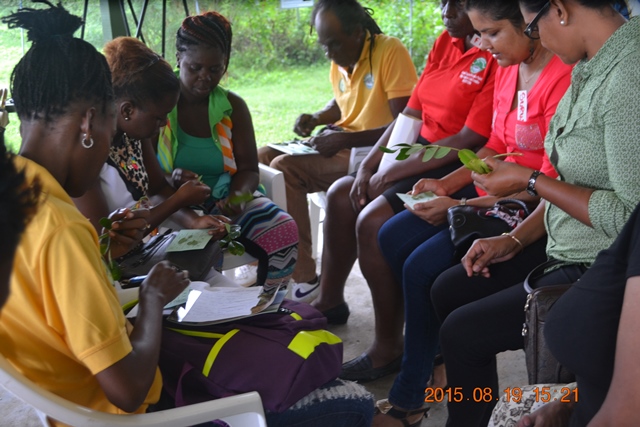Community-based mangrove management
Mangrove ecology training for community volunteers
NAREI
Community-based mangrove management seeks to address unsustainable human use of mangroves in Guyana by engaging with local communities living adjacent to mangrove areas and facilitating their participation in management and livelihood activities aimed at providing an alternative source of income for community members dependent on mangroves for their livelihoods.
Communities were trained in alternative livelihoods such as beekeeping and provided with basic equipment to establish beekeeping in mangrove forested areas. Members were also trained in tourism and bird watching as another livelihood option as they conduct tours in the mangrove forest.
Men and women are engaged at all levels of the restoration from planning to implementation and monitoring. Where seedling planting is used as an intervention and community seedling nurseries area established, families work together to collect seeds and grow health seedlings for planting.
Volunteer groups, i.e. Village Mangrove Action Committees are established in restoration areas or vulnerable areas and their members trained in the importance of mangroves. These volunteers, 80% women, become the voice of the project in their villages by conducting awareness sessions in schools etc.
The willingness of community members living near or adjacent to mangrove forest or a potential restoration site to participate in restoration or protection activities is critical to success.
The needs and aspirations of community members must be taken into consideration and initiatives that would enable them to earn a livelihood from sustainable management of the forest should be implemented. Education on the importance of the forest as coastal protection is also critical.
The participation of the local community in mangrove restoration and protection initiatives is one of the most important factors in the success and long-term sustainability of the program. Though there has been immense community participation at selected locations, one of the greatest challenges remains the commitment and participation of local communities. The Project is challenged to motivate residents at other intervention sites to participate in mangrove protection and awareness and to become involved in the monitoring of their coastal resources. The will to change old habits and action of dumping and illegal grazing still remains of great concern.

